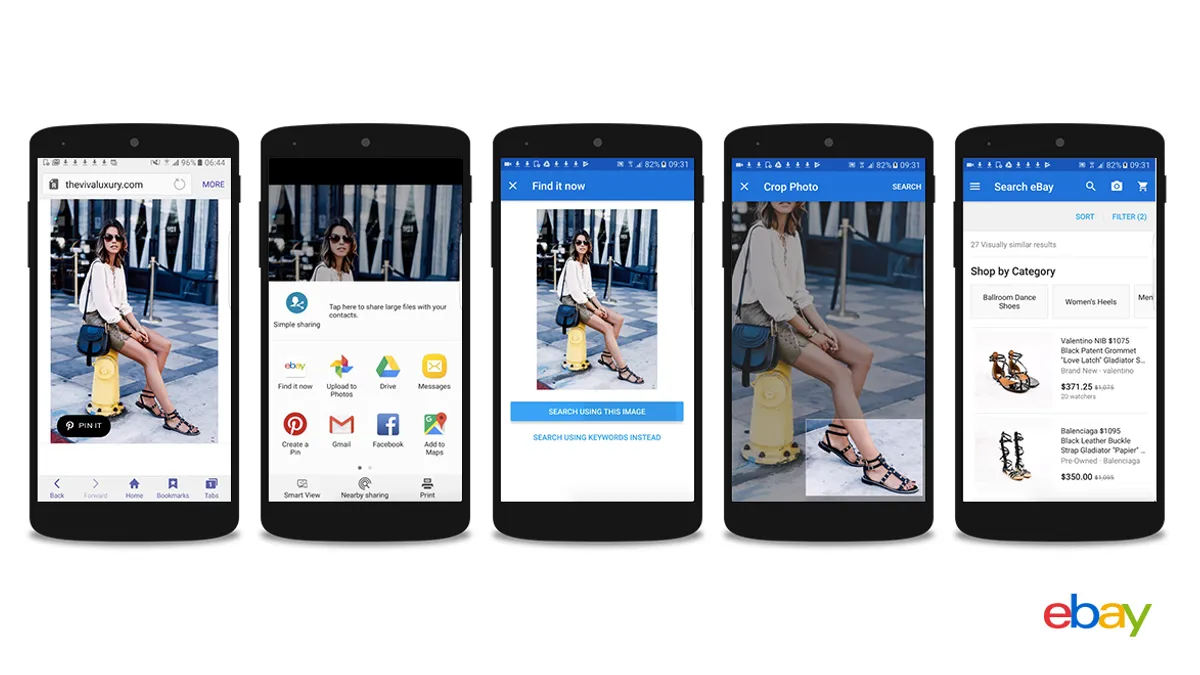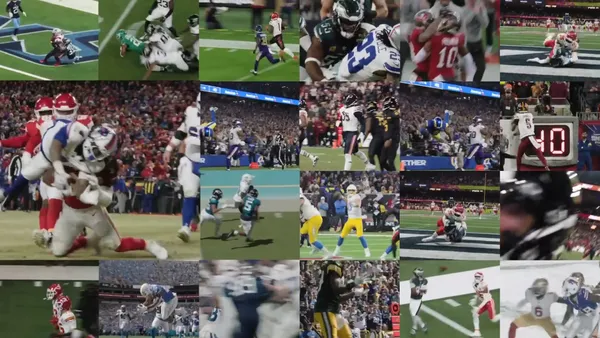Dive Brief:
- EBay rolled out two artificial intelligence-based image-recognition features — Find It On eBay and Image Search — this week, allowing photo-driven search among all of eBay’s 1.1 billion listings from mobile devices, according to an eBay blog post.
- Find It On eBay allows a shopper to start their search on any social platform, blog or website and share a product image with eBay's mobile app to find similar listings on the online marketplace.
- Image Search is a similar concept, featuring a camera button that allows a user to take a photo or use an existing photo to start the shopping search. EBay will then display listings for items that are a close match or visually similar to that image, according to the post.
Dive Insight:
The official rollout of these features comes about three months after eBay first announced its image search plans back in July, and has risen amid a bullish outlook for image search, as an estimated 50% of searches are expected to come from images or videos by 2020, and more than 75% of consumers already admit to being inspired to make a purchase based on images they viewed, according to GeoMarketing.
The idea for eBay's features emerged during the annual eBay Hack Week company-wide innovation competition, though eBay is hardly the only company going live with image search capabilities these days. Retailers like Macy’s and Target were doing some form of image-driven search a few years ago, though in more recent times, Google and especially Pinterest have invested more in image search technology to refine these capabilities and make them easier to use.
These newer approaches are exemplified by Pinterest Lens, which Target said last month it would begin integrating with its registry shopping experience — one of the first partnerships of its kind between a retailer and a social media giant for implementation of visual search. Now, eBay is hitting the streets with its own take on image search by leveraging AI-based computer vision and deep learning technologies.
EBay's features make use of a deep learning model called a convolutional neural network, which processes the images from users and gives the eBay app something it can compare to the live listings on eBay, according to the company's blog post. The resulting items are then ranked based on visual similarity to the original image, the company said.
As more retailers, brands and social networks offer image search on their sites and in their apps, having a very refined and learned tool could make a difference for eBay. This isn’t the first time the company has used image search either, having incorporated it in its eBay Collective marketplace and in its eBay ShopBot on Facebook Messenger.















